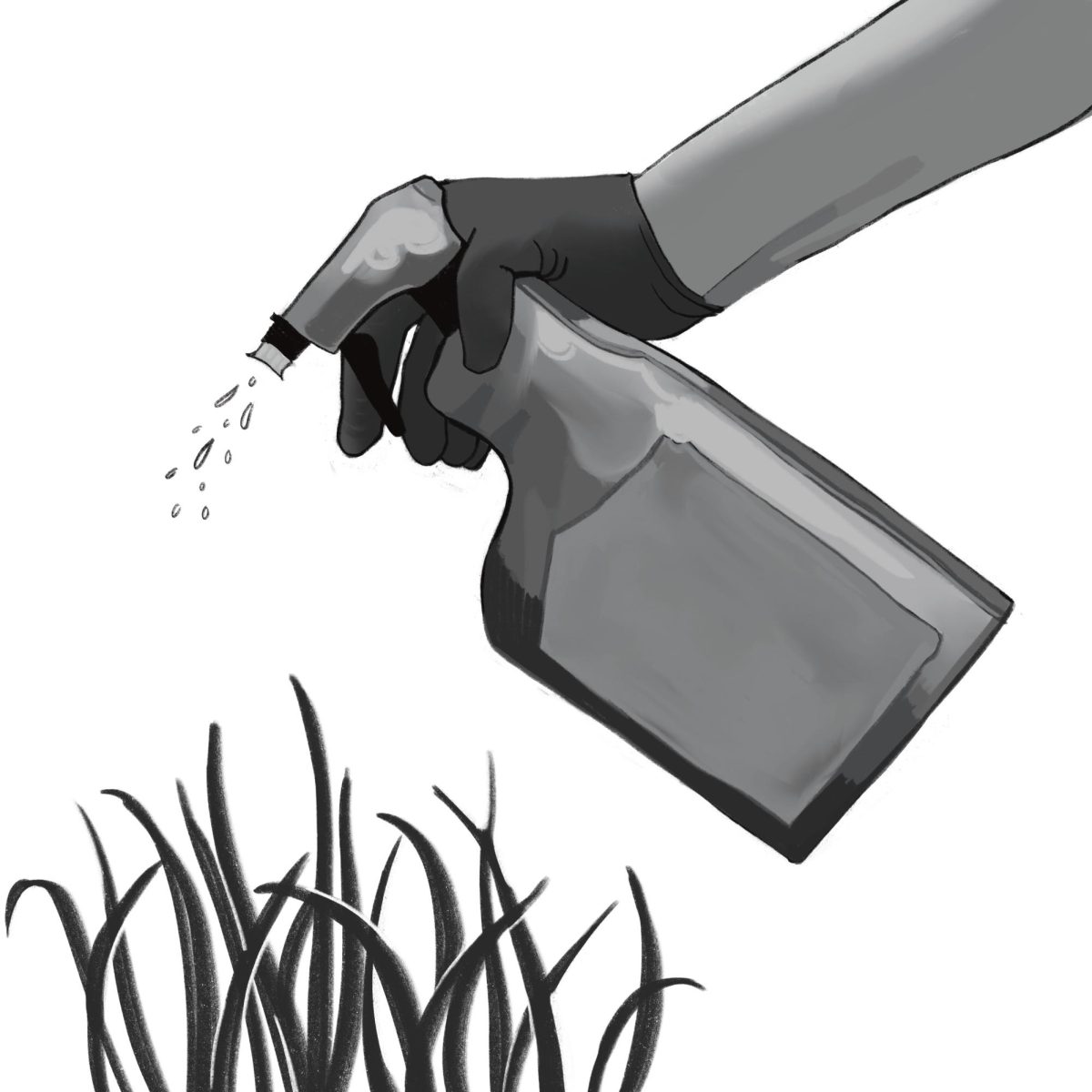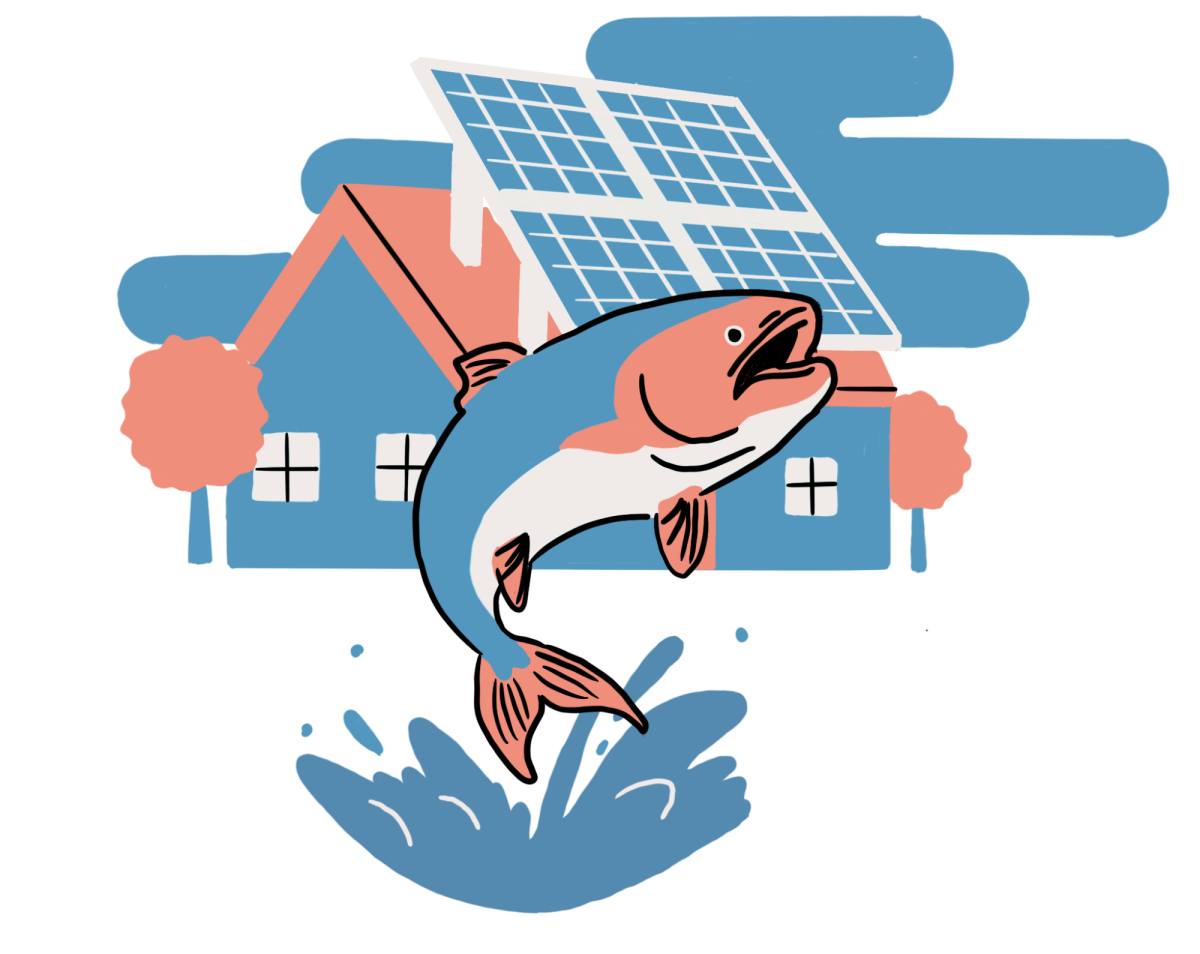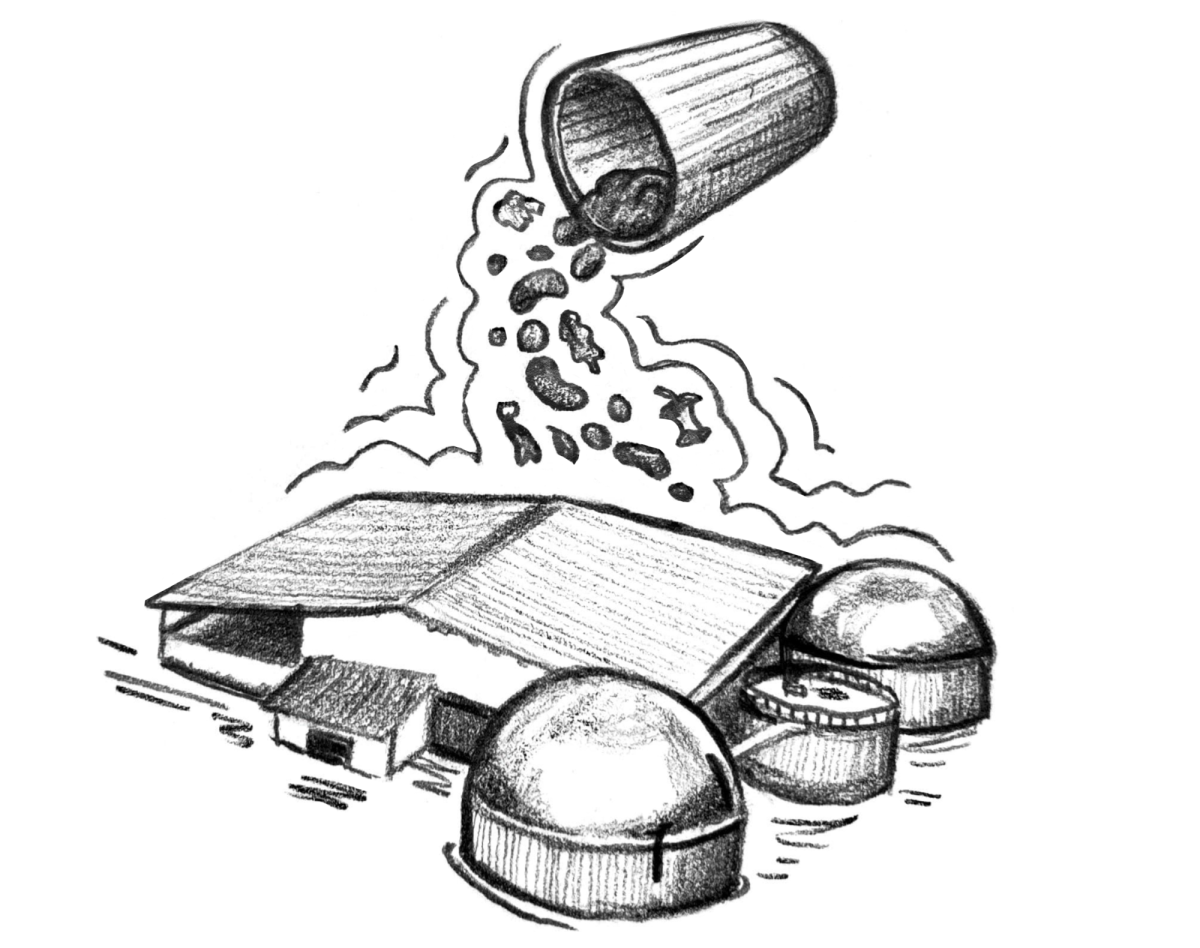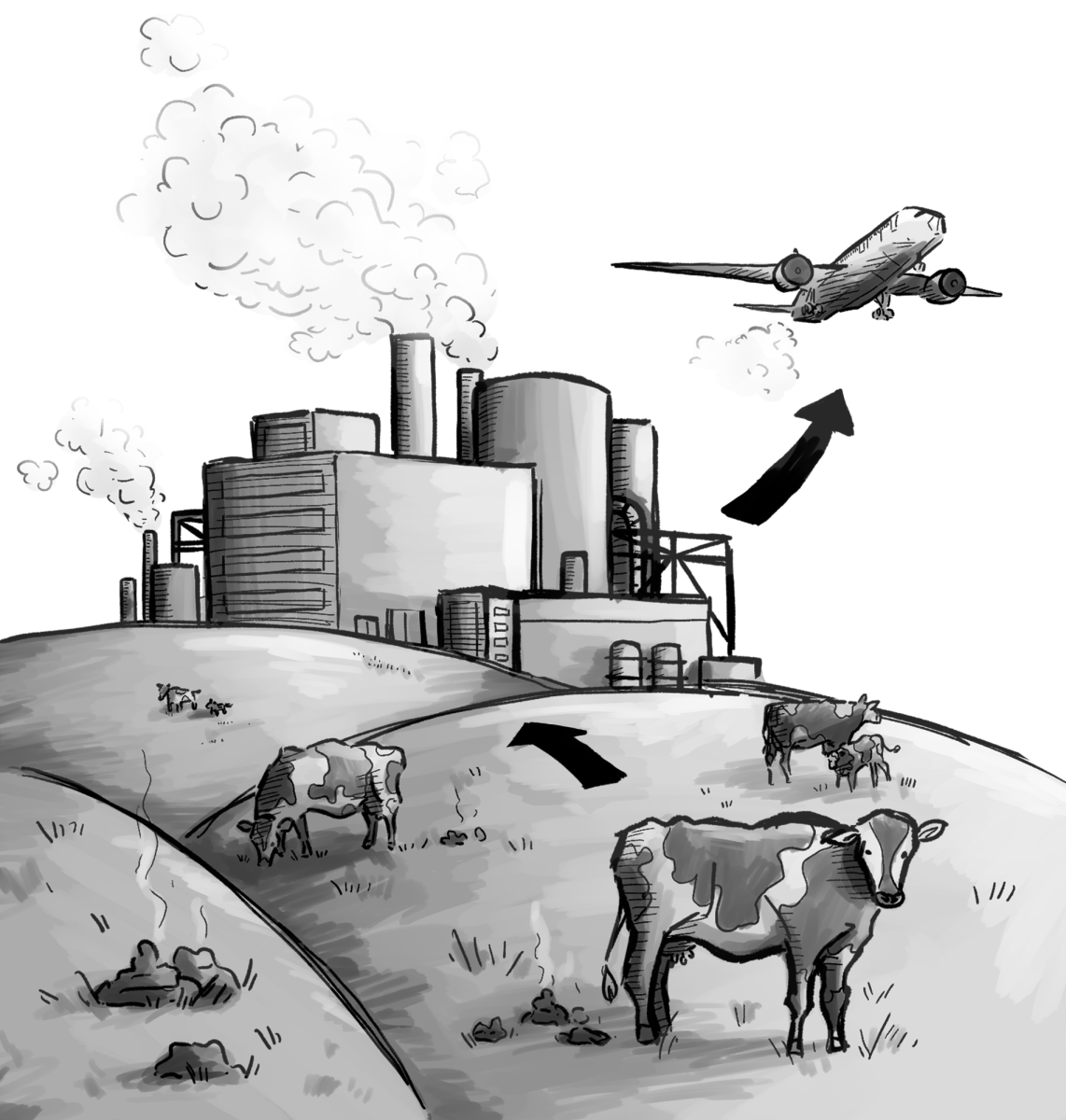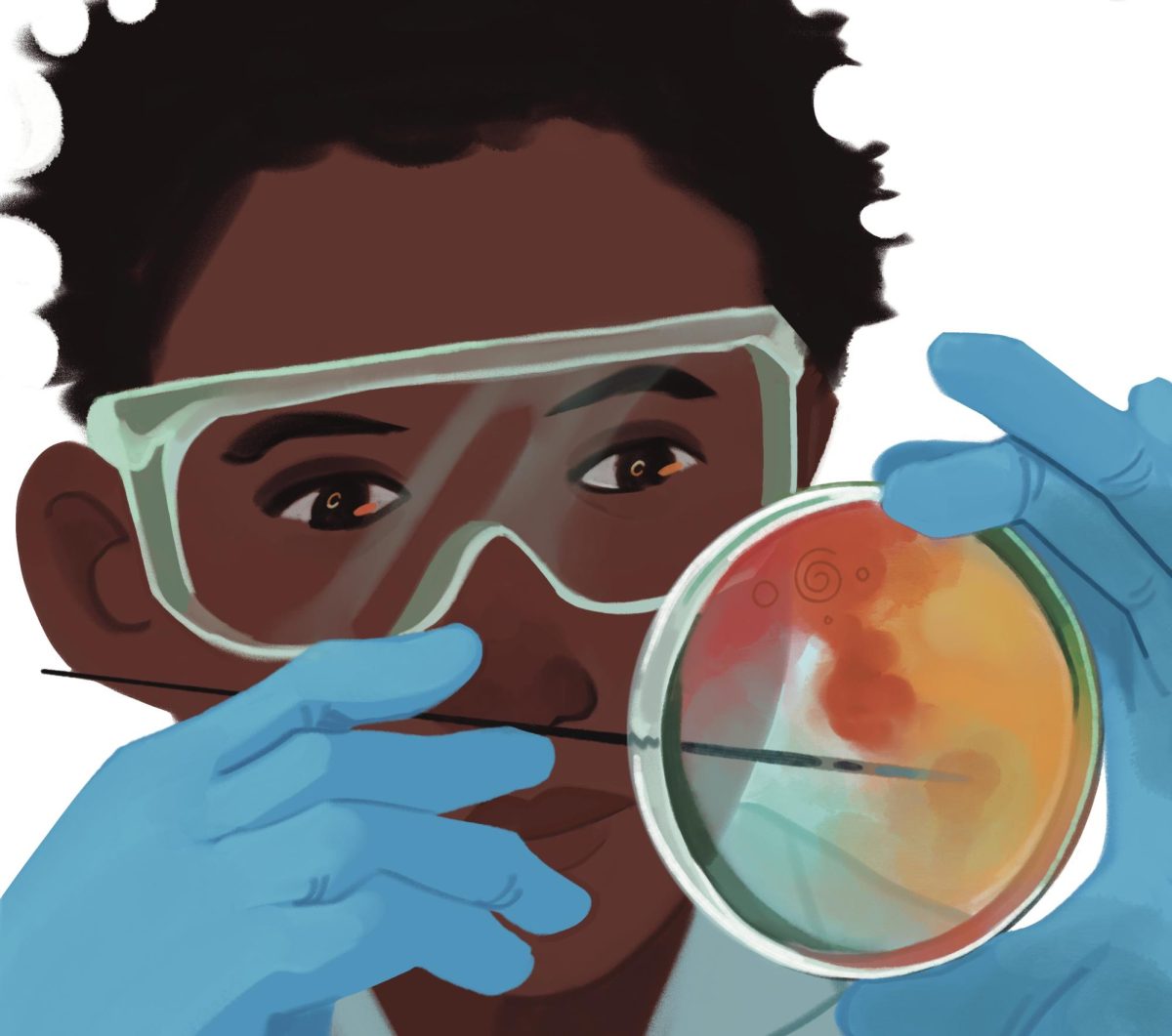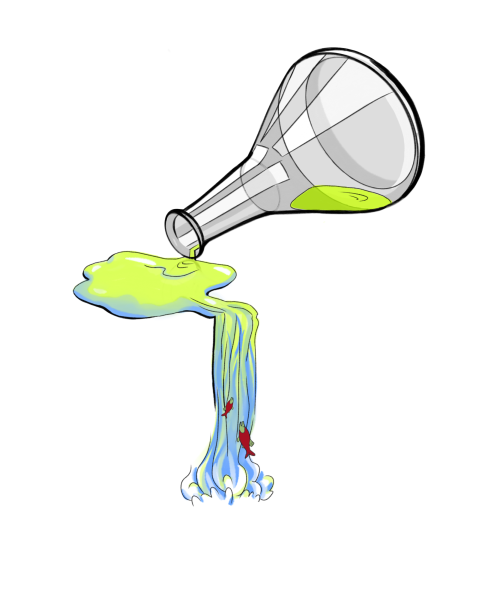
At Whitman, many students take biology, chemistry or biochemistry courses that involve working with a variety of chemicals in the lab. Notably, these chemicals are disposed of in different ways depending on their properties, raising questions about the reasons behind these methods and how the disposal process is managed.
Laboratory chemicals are often hazardous to the environment, leaving an ecological footprint that can persist for centuries. In the short term, chemical waste can contaminate water and soil, harming crops and leading to the death of animals and marine life. Over the long term, these pollutants may cause severe health issues in humans, including cancer, autoimmune disorders like multiple sclerosis and genetic mutations that can affect future generations.
Associate Professor and Chair of the Chemistry Department, Dalia Biswas, described modifying certain lab procedures for Advanced General Chemistry in order to reduce chemical waste.
“We cut down by about a quarter….We still can do chemistry without having to waste too much material,” Biswas said.
This attitude reflects a broader commitment to embedding green chemistry principles into the curriculum—a deliberate effort to reduce waste while educating students about environmentally sustainable practices.
“I think the green chemistry is really highlighted in our curriculum….I think we need to be very intentional about it,” Biswas said.
Biswas elaborated on the educational aspect of waste disposal. This emphasis on teaching students about waste disposal and environmental impacts is crucial, particularly for those new to chemistry labs.
“We do tell students in general lab how to dispose [of waste] and how it’s bad for the environment… We’re collecting everything and then obviously we are recycling it or sending it to a disposal company,” Biswas said.
She also highlighted the importance of distinguishing which substances can be disposed of on campus and which substances require special handling.
“In general chemistry labs, we emphasize: ‘This is food, this is safe for disposal, but this is toxic organic, we’re going to collect it’…according to state and federal regulation,” Biswas said.
Effective waste management logistics are intricate and demand meticulous planning.
“Our stockroom manager sets up the waste disposal, labeling and containers… She will have a designated waste container depending on the toxicity level, the concentration you are using, whether we should put it down the drain or we should collect it,” Biswas said.
The importance of proper labeling and categorization cannot be overstated, as improper disposal can have serious consequences.
“Large quantity of any waste, we collect it….If it’s highly concentrated [or] something that’s going to impact the piping…it should not be [going down the drain],” Biswas said.
Vicki Britt, the Chemistry Stockroom and Facilities Manager, provided additional insight into the day-to-day management of chemical waste. Britt’s role includes close monitoring of students during lab sessions to ensure that they follow safety protocols and proper waste disposal practices.
“Lab day involves setting up beforehand, which includes having protocols for what materials and chemicals are put out. This setup includes waste management as well,” Britt said. “During lab days, we try to keep a close eye on the students because they sometimes need to wash their glassware with acetone, which we always collect. It’s essential that we monitor the waste and the labs are designed to minimize the waste we generate.”
The challenges of waste disposal extend beyond monitoring student behavior—effective training is crucial for faculty and staff, who must be well-equipped to manage chemical disposal safely. Most faculty members have undergone graduate-level training in chemical hygiene, which includes best practices for handling and disposing of chemicals responsibly.
“It’s important that we have a chemical hygiene plan that involves yearly training or at least an hour-long course where we can go over procedures and protocols, as people can forget the safety protocols over time,” Britt said.
Britt described the intricate process of waste collection and disposal that enables the College to comply with environmental regulations.
“The lab is the frontline for waste disposal; waste is then transferred to the stockroom, where it’s collected into bulk containers. We carefully track the amount of waste we generate and estimate the percentage of each component as accurately as possible,” Britt said.
Once Whitman has completed its part, responsibility shifts to an external company, which handles the final stages of disposal. Britt underscored the essential role of the waste management company in ensuring safe, compliant disposal practices.
“When Clean Harbors collects our waste, they transport it to a processing facility, where it is separated by type,” Britt said.
Collaboration between departments at Whitman is also essential to effective waste management. Regular meetings and tools like Campus Optics enable a thorough understanding of the specific hazards in each laboratory, ensuring a coordinated and informed approach to safety and compliance.
“Collaboration is key. The biology department, the geology department, and Environmental Health and Safety all work together on chemical waste management,” Britt said.
Student engagement in waste disposal practices is vital, as they are the primary users of chemicals and are directly exposed to them in the laboratory. Fostering a sense of responsibility to safeguard both the environment and their own health is crucial. Nicola Myers, a junior Chemistry major and teaching assistant, reflected on her role and responsibilities in the lab.
“The biggest responsibilities are making sure that the students who are handling the chemicals are following the proper safety protocols…making sure people are disposing of waste properly,” Myers said.
Myers highlighted the importance of providing students with clear guidelines.
“A lot of professors will include information in the pre-labs or the lab handouts…I think that helps give students context for the things that they’re working with and knowing how they need to handle them,” Myers said.
Myers explained that she recognizes the challenges new students face when learning to navigate laboratory protocols. It is common for those starting their lab work in general chemistry courses to make mistakes related to lab safety and proper waste disposal. Nevertheless, these early experiences are essential for developing a solid foundation in safe laboratory practices.
“Especially for gen chem lab, some students might be new to being in a chemistry lab… learning that you can’t dump everything down the drain and some things need to be disposed of into a distinct container,” Myers said.
The continuous effort to improve sustainability in the laboratory is a key focus.
“A lot of labs try to make adjustments to be as sustainable as possible, like eliminating chemicals that are more dangerous or toxic,” Myers said.
Biswas echoed this sentiment, noting that the department is actively working to integrate green chemistry principles into their curriculum.
“We’re redoing a lab with a lot of intentionality and real-life scenarios….Green chemistry needs to be embedded as much as possible,” Biswas said.
However, implementing these changes is not without its challenges. The need for careful planning and evaluation is critical in ensuring that new protocols are effective and safe for students and faculty alike.
“It takes time….you have to rethink, completely redo it and that’s a lot of investment from faculty in terms of time. We’re doing experiments to make sure it’s working and then implement it,” Biswas said.
Myers believes that her role as a teaching assistant has significantly deepened her understanding of waste management and sustainability. This dual perspective allows her to appreciate the complexities of laboratory work more fully and underscores the importance of instilling sound practices in the next generation of chemists.
“Being a TA has been a great experience for me because I’ve been able to see labs from a teaching perspective….It’s helped me realize the importance of teaching safety protocols well,” Myers said.
The role of technology and simulation in waste reduction is increasingly significant. In recent years, chemistry has transitioned from traditional laboratory practices that require physical chemicals to the innovative approach of computational chemistry. This method has demonstrated considerable success and utility across various applications. Notably, the winners of the 2024 Nobel Prize in Chemistry employed computational chemistry in their groundbreaking research, underscoring its importance in advancing the field.
Biswas explained that computational chemistry allows scientists to simulate reactions in order to select which tests to run in a lab setting.
“Computational chemistry is really getting integrated [at Whitman],” Biswas said.
While this approach has the potential to minimize the use of chemicals, she cautions that it comes with its own energy costs.
“With simulations, obviously we are cutting down chemicals, but we are also requiring energy for simulations. Computers use a lot of energy and balancing all of this [is] important,” Biswas said.
Chemical waste management at Whitman is a dynamic process that relies on collaboration among faculty, laboratory managers and students. By implementing green chemistry principles, engaging in meticulous planning and prioritizing ongoing education, the College aims to cultivate a safe and environmentally responsible laboratory environment. This commitment to sustainability and safety not only prepares students for successful careers in science but also minimizes the environmental impact of their work. As the Department of Chemistry continues to evolve, it remains dedicated to refining its practices and fostering a culture of accountability among both students and faculty.







